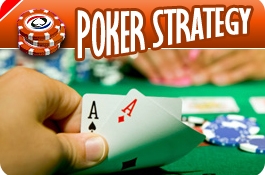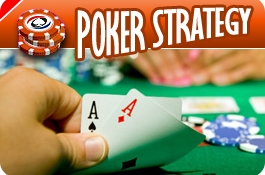Tournament Poker with Jeremiah Smith: To Three-bet or Not to Three-bet

As I was stopping by to check in on Thomas ��gnightmoon�� Fuller��s table in a WSOP event, he looks back over his shoulder and asked, ��So, do you think you can win a tournament without ever reraising?�� As I pondered my response, I happened to notice Tom��s good friend and WSOP roommate Jason ��TheMasterJ33�� at the next table over putting in a third bet from the cutoff preflop.
It was a fascinating juxtaposition. I was sandwiched between two tables whose one seats held two close friends who play completely different styles of poker. Jason is an uber-aggressive online tournament specialist (he��s no slouch in live events either) who has no problem putting a lot of chips into the pot before the flop. Thomas is at the other end of the spectrum, a player who prefers a less risky game of calling in position with his whole range of hands. Jason��s just as likely to reraise you with 7-8 suited as he is A-A. Thomas is just as likely to flat-call you with A-A as he is 7-8 suited.
Which one is correct? Which style is better? Like all things in poker, it depends. Both approaches have a lot of merit. Jason accumulates chips by applying constant pressure and frustrating his opponents into making mistakes. Thomas accumulates chips by using his post-flop skill set to frustrate his opponents into both bluffing off chips and getting it in versus his always-disguised hole cards.
Everyone approaches the game differently; we all know there is no one ��correct�� way to play. Some people just feel more comfortable defining their opponent��s hand by putting in that reraise. Others feel more comfortable keeping the pot small until they see a flop. It��s not that the gnightmoons of the poker world can��t come back over the top of you holding a couple or rags, or that TheMasterJ33s don��t know how to pronounce ��fourth street.�� Each player has found a style that they are comfortable with, can be profitable, and works for them. For every successful-Grospellier-three-betting-machine, there��s a winning-Negreanu-calling-station.
Ideally, a player can utilize both strategies to their advantage. It��s all about adding another tool to your poker toolbox, and being able to pull the right one out when it��s time to go to work. Sometimes, the job calls for a sledgehammer. Other situations are better served with a screwdriver. If a player in middle position opens to three times the big blind and gets two callers, it��s not time to get cute with pocket aces in the small blind. Conversely, if you��ve been pounding away on an opponent for a few orbits, it��s probably not a good idea to put in a reraise with the old J-4.
However, it��s not just about the hands you are dealt. Astute opponents will pick up on your tendencies rather quickly and start putting you to the test. I spent a good deal of time playing with Jon ��PearlJammer�� Turner last summer. He had noticed a tendency I had to flat-call with my big hands preflop and reraise with the marginal ones. A somewhat frisky opponent opened in middle position, and I put in a re-raise in the cutoff. Jon thought for a minute in the small blind before putting in the fourth bet. In one of those ��I-know-you-know-that-I-know-what-you-know�� moments, I felt like Jon was using that tendency against me. However, given the stack sizes and the situation there just wasn��t much I could do against a player of his caliber, so I wisely folded. A few weeks later, I asked Jon what he had. A big grin came over his face as he told me, ��6-4 of hearts.�� A great discussion about falling into predictable patterns emerged.
As always, you have to remember to let the game come to you. Just because you see Phil Ivey put in a big re-raise with a piece of cheese on TV doesn��t mean you should. And just because Phil Hellmuth can see into his opponent��s souls doesn��t mean you can always use the small-ball style. Do your best to find a balance between the two, and I have a feeling we��ll be seeing you at a final table in the near future.








